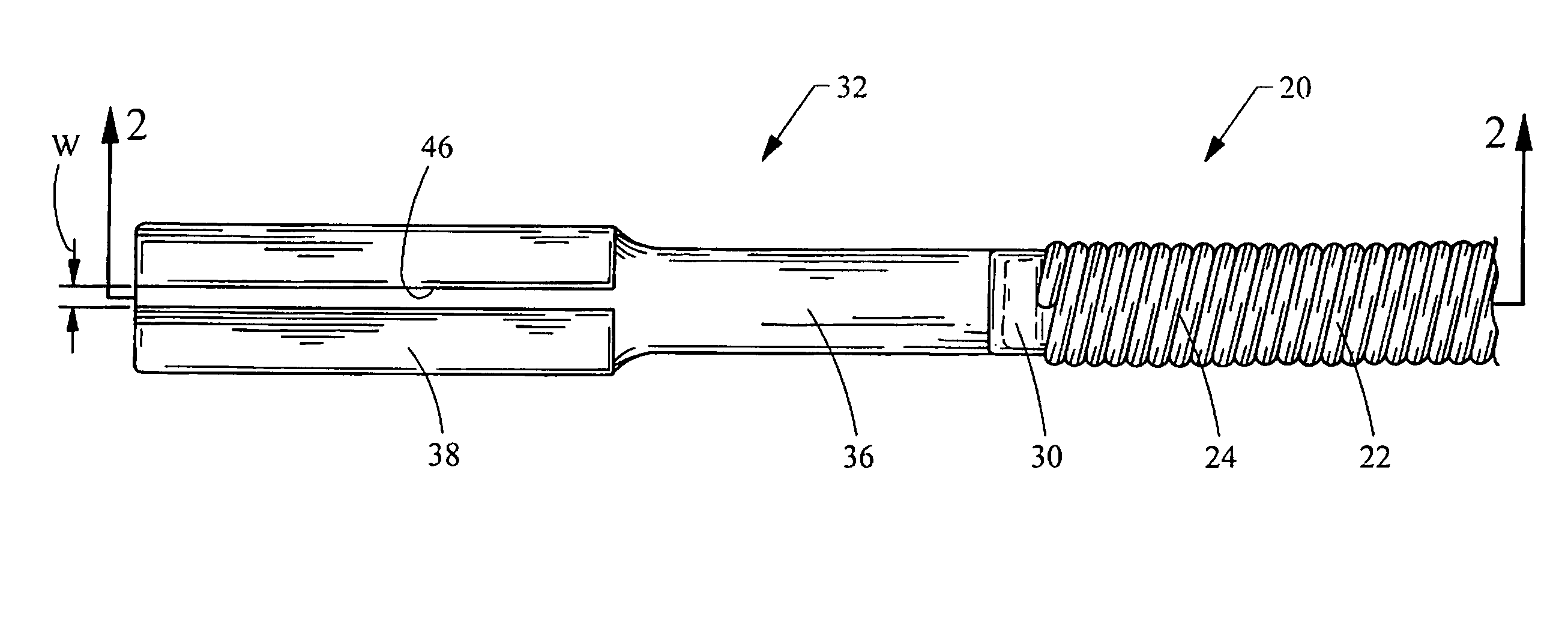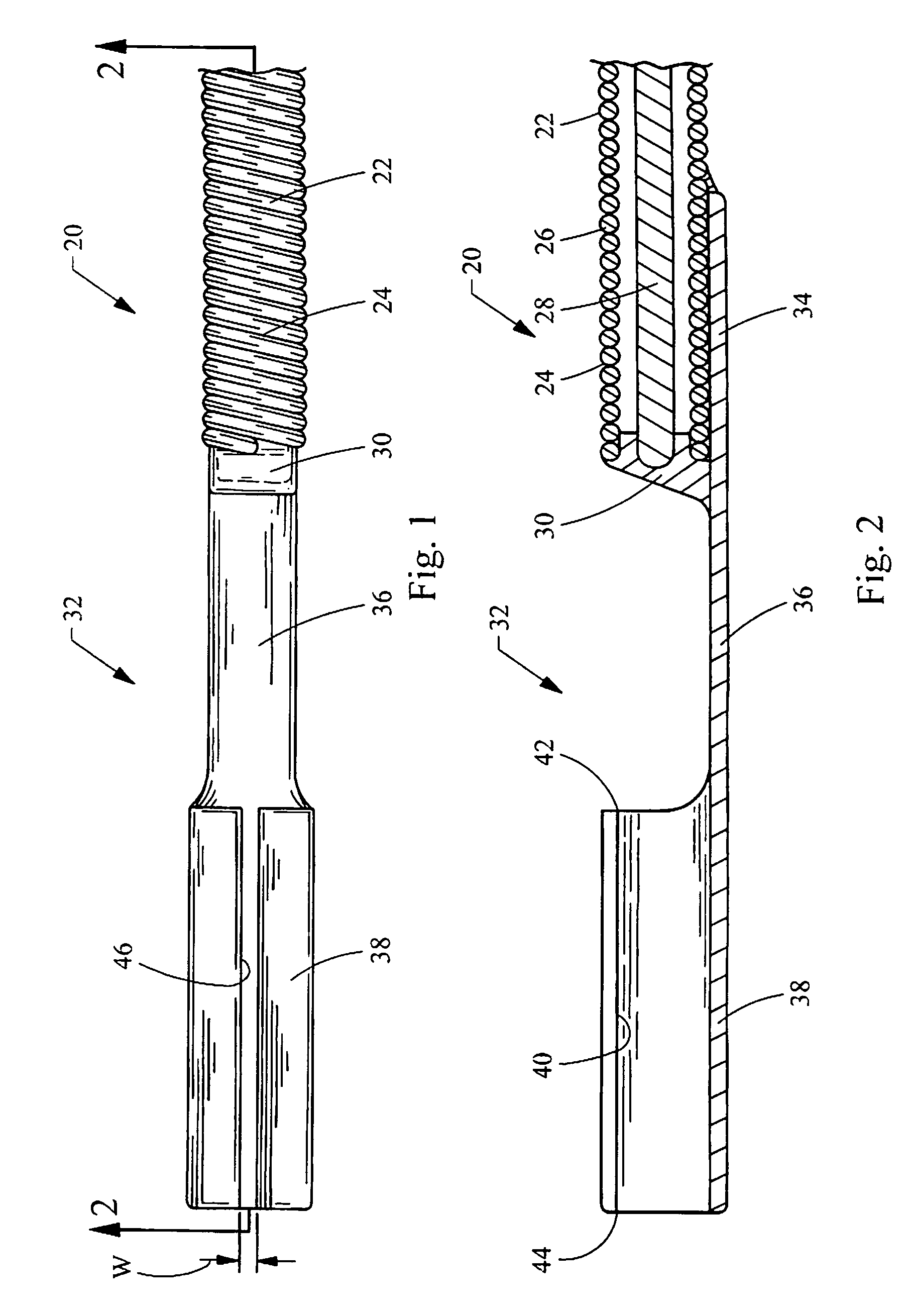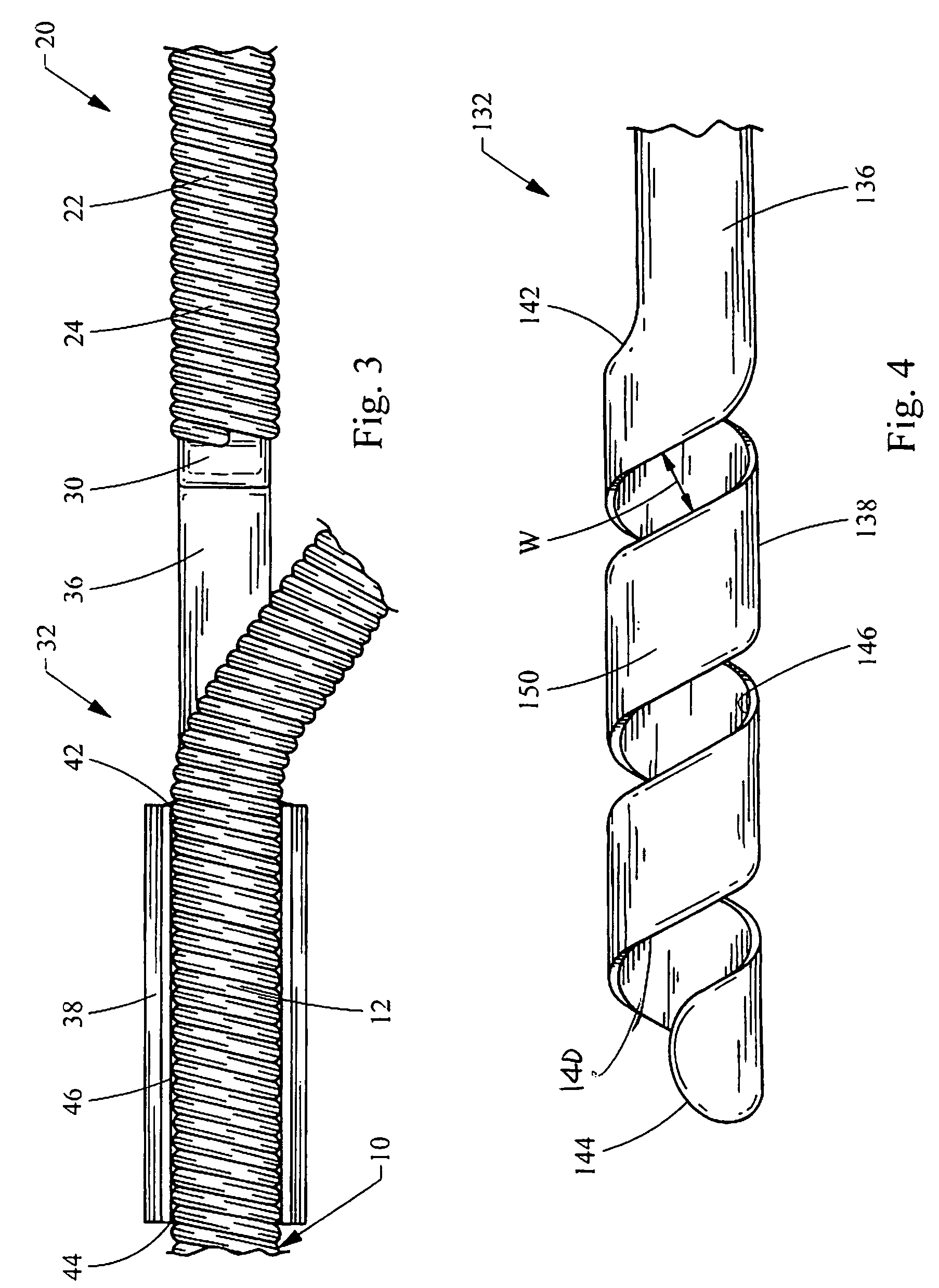Wire guide having distal coupling tip for attachment to a previously introduced wire guide
a wire guide and distal coupling technology, which is applied in the direction of contact members penetrating/cutting insulation/cable strands, catheters, applications, etc., can solve the problems of proximal tortuosity of the vasculature, wire guide tip prolapse from the site, and potential conflicting requirements for wire guide requirements, etc., to achieve easy and reliable traversal
- Summary
- Abstract
- Description
- Claims
- Application Information
AI Technical Summary
Benefits of technology
Problems solved by technology
Method used
Image
Examples
Embodiment Construction
[0021]Turning now to the figures, FIGS. 1 to 3 depict a coupling wire guide 20 constructed in accordance with the teachings of the present invention. The coupling wire guide 20 is easily and reliably coupled to and traversed along a previously introduced wire guide 10 (FIG. 3), and notably is “side-loading” meaning the wire guide 20 may be attached by “clipping on” to a mid-section of the previously introduced wire guide 10. As used herein, the term “mid-section” refers to any point between the free ends of the previously introduced wire guide 10. In this manner, the coupling wire guide 20 may be coupled to and traversed along the previously introduced wire guide 10 without gaining access to the proximal end (or distal end) of the previously introduced guide wire 10, thereby saving time and increasing the versatility of the coupling wire guide 20.
[0022]As best seen in FIGS. 1 and 2, the coupling wire guide 20 generally includes a main body 22 and a coupling tip 32. The coupling tip ...
PUM
 Login to View More
Login to View More Abstract
Description
Claims
Application Information
 Login to View More
Login to View More - R&D
- Intellectual Property
- Life Sciences
- Materials
- Tech Scout
- Unparalleled Data Quality
- Higher Quality Content
- 60% Fewer Hallucinations
Browse by: Latest US Patents, China's latest patents, Technical Efficacy Thesaurus, Application Domain, Technology Topic, Popular Technical Reports.
© 2025 PatSnap. All rights reserved.Legal|Privacy policy|Modern Slavery Act Transparency Statement|Sitemap|About US| Contact US: help@patsnap.com



